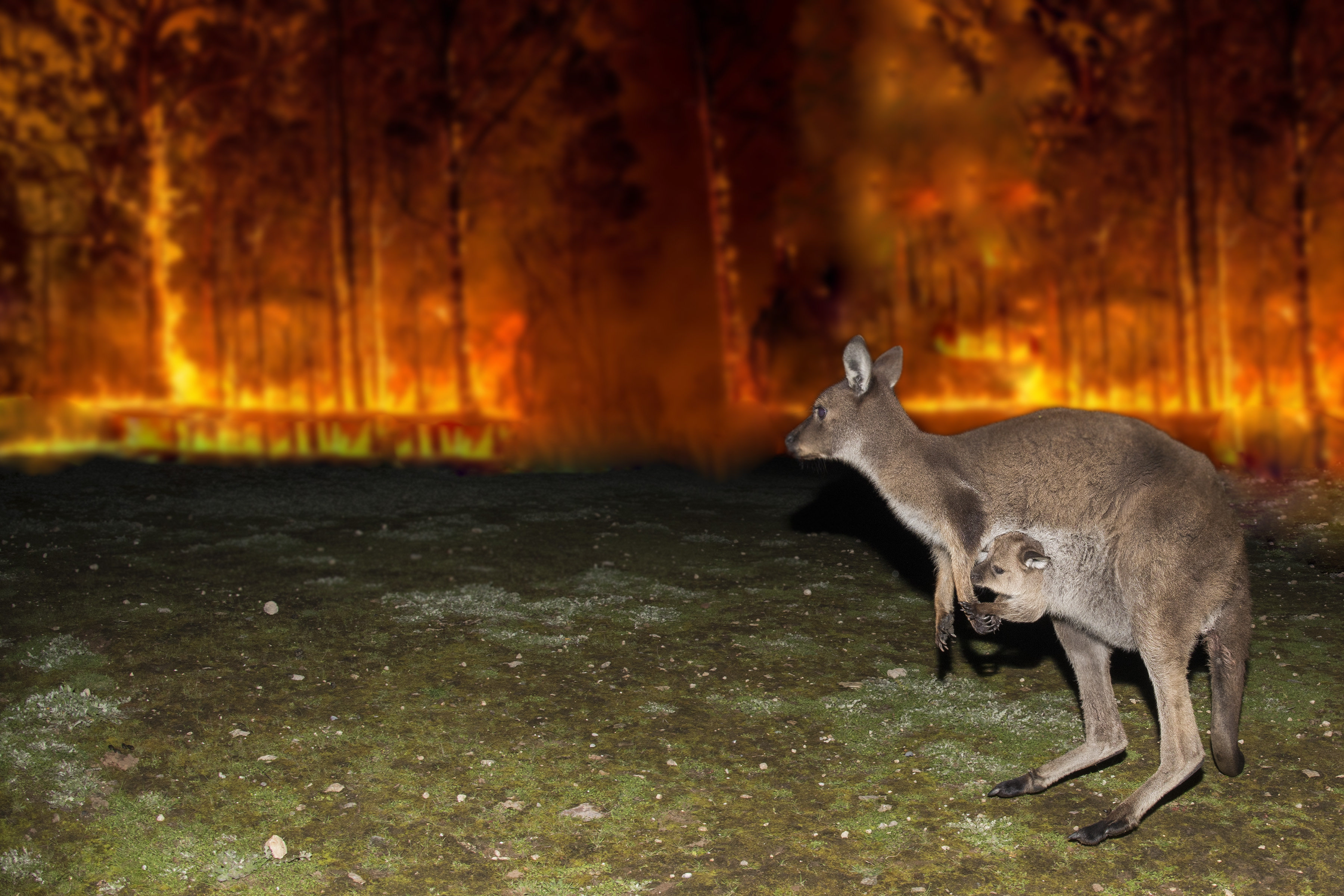Adrina Selles was getting used to this: Fires (shown here) raged through the Australian bush country, endangering her animal-rehab center.
“We were threatened on four different occasions, from four different directions,” Selles – featured in a “Nature” film at 8 p.m. Wednesday (Oct. 28) on PBS – recalled. “We had to evacuate each time.”
Then came the big one – a massive, New Year’s Eve blaze that would consume 46 million acres.
“We thought we were going to lose the whole property,” she told the Television Critics Association. She couldn’t protect the 15 joeys (young kangaroos) in her care. “We just had to open the gates and (hope they would) find shelter.”
When she finally returned, there was a surprise: “Our house was still standing …. Everything survived, including all the joeys that we released.”
That house became one of the focal points for “Nature: Australian Bushfire Rescue.”
As Selles did the virtual TCA session, it was 6:20 a.m. in New South Wales. She and filmmaker Anja Taylor were bottle-feeding joeys … or, at least, trying to.
“I have never fed a joey before,” Taylor said, adding: “I have never encountered a wombat before – which is an extraordinarily delightful creature.”
Her film traces the efforts – sometimes futile – to save wombats, wallabies and joeys. “It really was heartwarming, as well as heartbreaking,” she said.,
Fred Kaufman, the “Nature” producer, prefers the heartwarming part, watching helpers scramble to save animals. “This film gives me hope for the future,” he said. For instance:
– Deep in the scorched bush, James Fitzgerald used a koala-sniffing dog. The koalas were nudged down from treetops and given water, which they devoured eagerly.
– On Kangaroo Island, the Karran family was busy. “They were out every single day, all day, for weeks and months, looking for koalas by the side of the road, kangaroos in plantations,” Taylor said.
– Throughout the bush, new methods were needed. Carrots and sweet potatoes were dropped from helicopters. A mist-spray was used – cooling animals in the same way Disney cools park-goers.
– And even the cities were impacted. “There was a great sense of guilt that Australians were carrying,” Taylor said. “There was an awful orange glow in the air every day and everybody’s cars were covered in brown dirt. It was just a reminder of things going terribly wrong.”
In the Sydney suburbs, the film shows a family using its home as a halfway house for a wombat. Wanda Wombat seems appreciative … even if she does rip the door and the leather couch.
Selles used to be a city-dweller herself. A former nurse, she operated the Sydney Wildlife Rescue.
“I have been looking after wildlife for about 8-to-10 years now,” she said. “I moved out to (New South Wales) two-and-a-half years ago, and that’s where I started to build the enclosure.”
At a former fish farm, she has a 40-acre space that includes her home and fenced ground. Kangaroos and wallabies can receive care and wander about, until they recover.
Then the fire raged … but somehow skipped her land. “It was like coming back to a little oasis in the middle of black. There was our house and all the property around. It was still green. So amazing.
“After the fires, we had lots and lots of help from within Australia and outside Australia. New Zealand sent a whole team that camped with us for two weeks.”
They mended animals – including possums, birds and a deadly tiger snake – that had somehow survived a fierce inferno.
